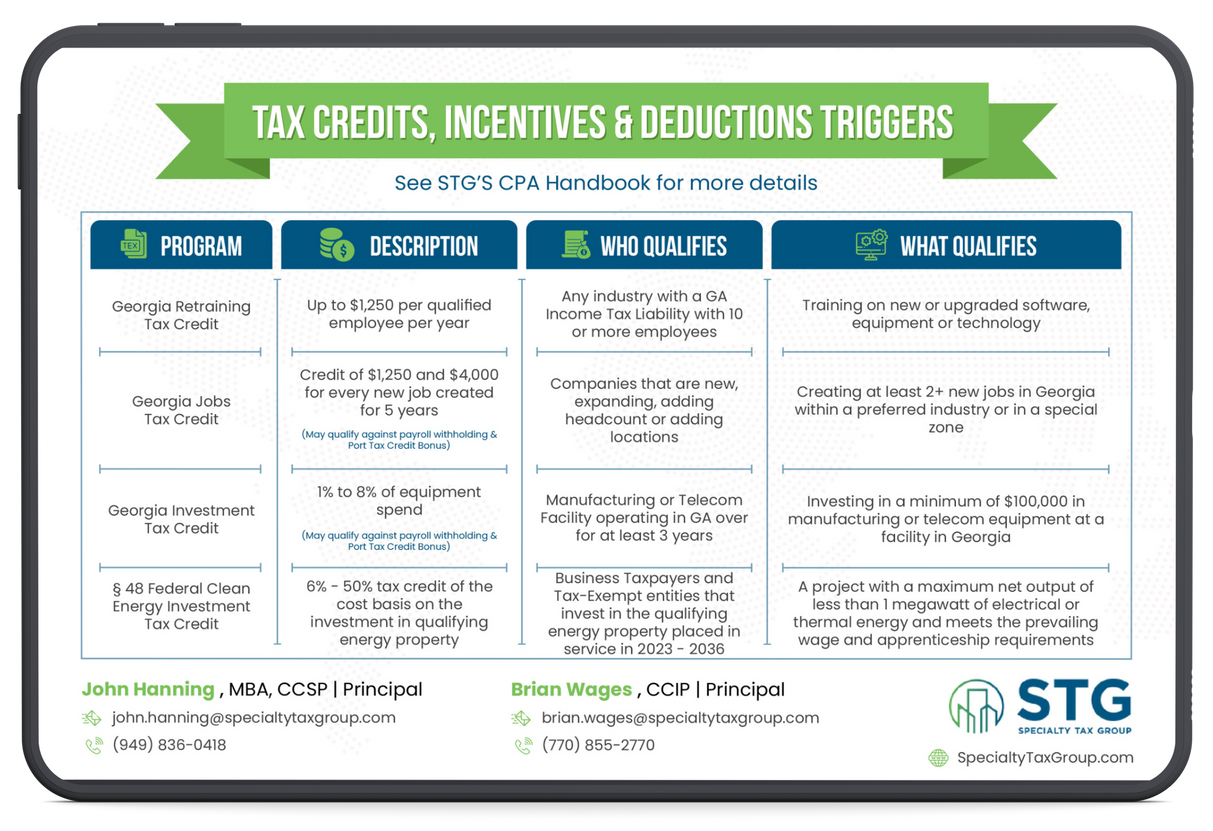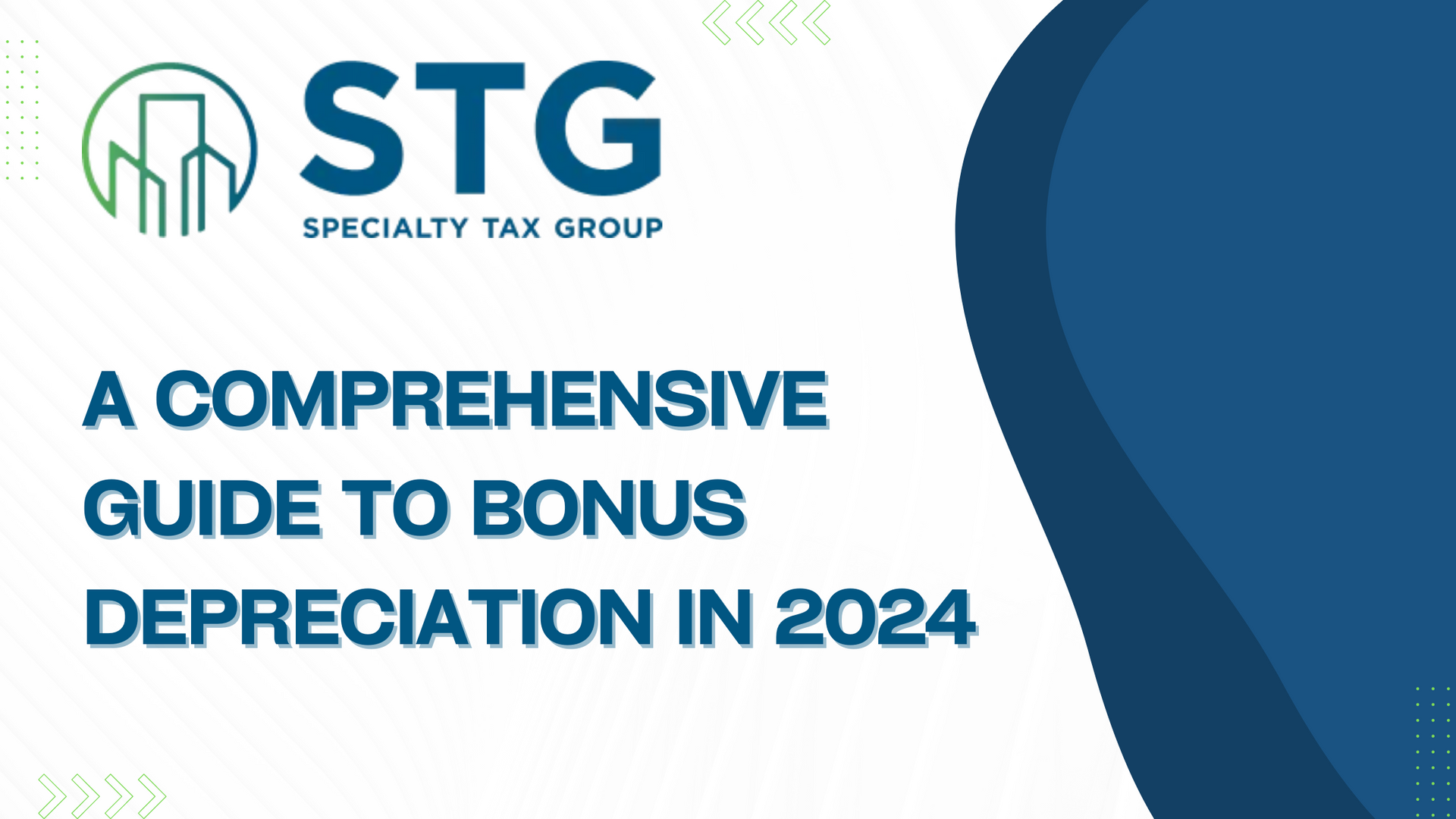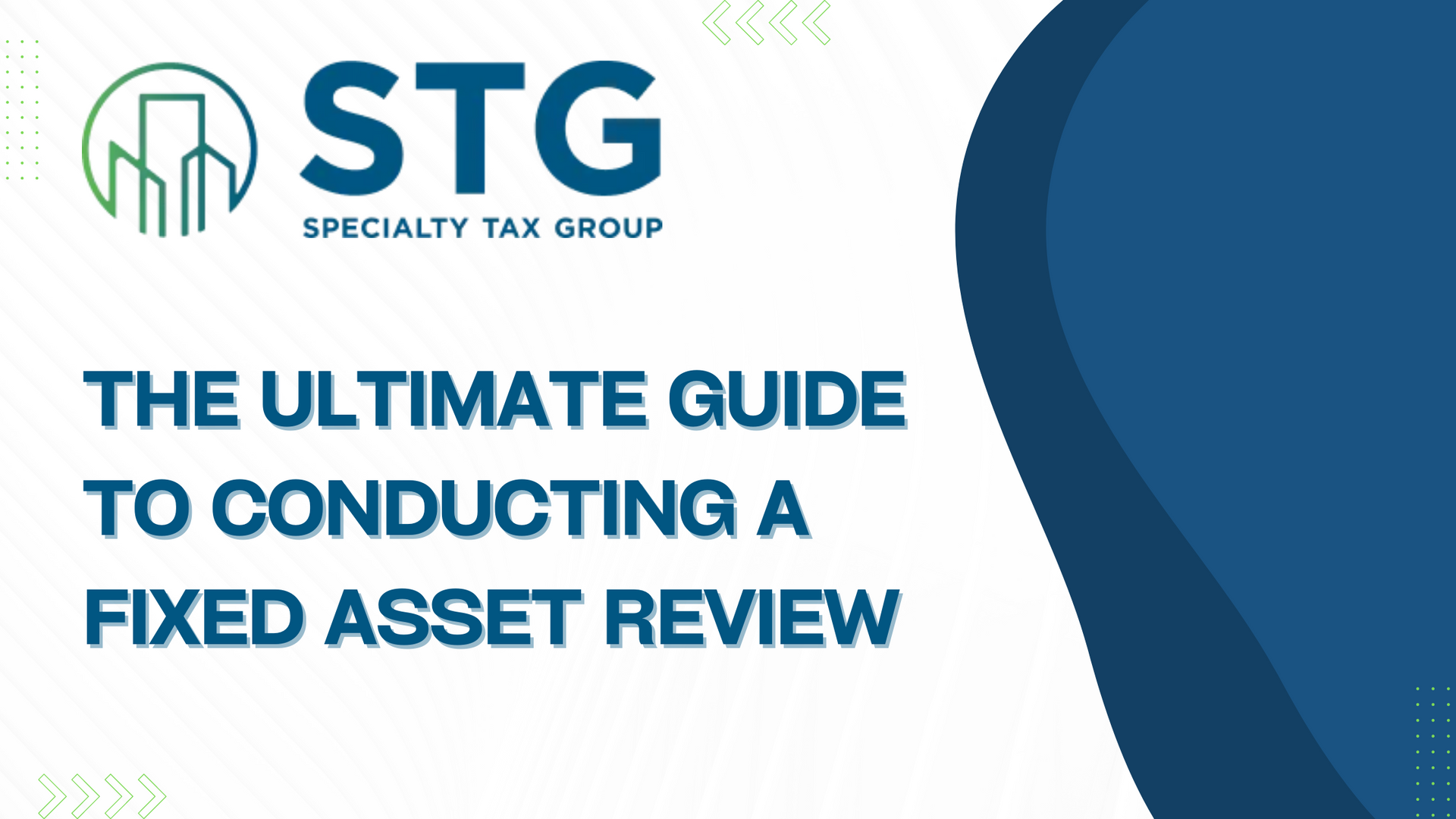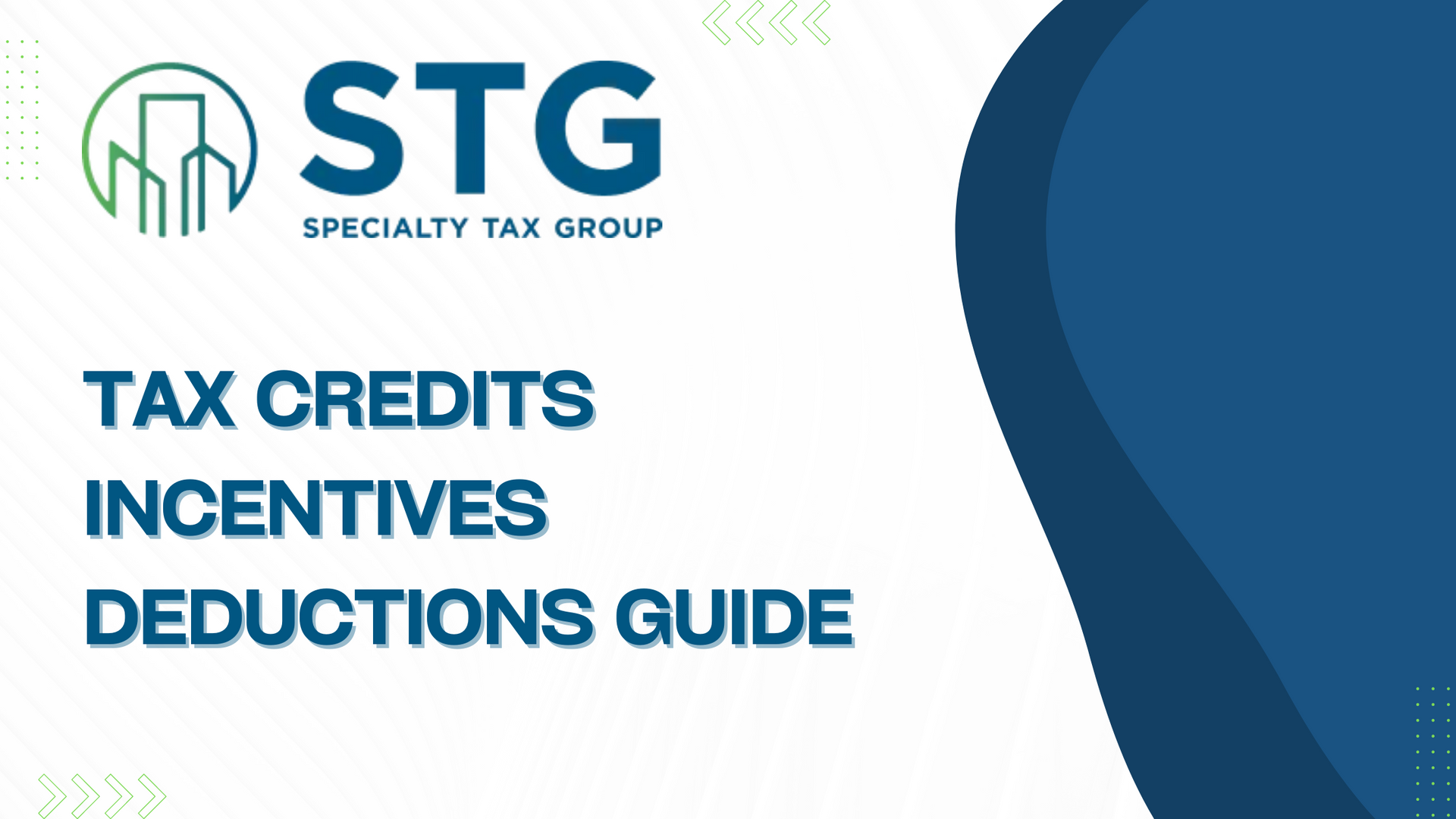This blog post has been researched, edited, and approved by John Hanning and Brian Wages. Join our newsletter below.
Newsletter Form
Thank you for joining our newsletter. We will email you the latest updates every other Thursday at 12pm.
Please try again later.
Imagine this: you're a property owner, and each year, as tax season approaches, a familiar sense of dread sets in. The substantial tax liabilities associated with your property seem unavoidable, a recurring financial burden that significantly impacts your bottom line. This scenario is not uncommon among property owners who often find themselves grappling with high tax liabilities, seeking ways to alleviate this financial strain.
Cost Segregation Studies
In the midst of these challenges, there emerges a solution that could be the key to unlocking significant tax savings: cost segregation studies. This approach, while not new, remains underutilized by many who could benefit from it.
Cost segregation studies offer a strategic method to reclassify property assets, accelerating depreciation deductions and thereby reducing current tax liabilities. As we dive deeper into this topic, we will explore how cost segregation studies can transform your tax strategy, potentially turning a pain point into a benefit for your financial portfolio.
Defining Cost Segregation
Cost segregation is a tax planning tool that simplifies how property owners manage their depreciation deductions. In essence, it's a method for real estate owners to reduce their tax obligations by accelerating the depreciation of their property.
Normally, the IRS mandates property owners to spread their depreciation deductions over 27.5 years for residential properties and 39 years for commercial properties. Cost segregation, however, allows owners to assert that specific components of their property, like electrical systems or plumbing, are depreciating faster. This results in larger deductions during the initial years of property ownership.
The Cost Segregation Process
The journey of a cost segregation study at Specialty Tax Group (STG) involves several key stages, each crucial to maximizing the tax benefits for property owners:
- NPV & Benefit Proposal – Free: The process commences with an NPV (Net Present Value) and Benefit Proposal, which STG offers at no cost. This initial step provides property owners with an estimate of the potential tax savings and financial benefits that could be realized through a cost segregation study.
- Data Gathering: The next phase involves data gathering. This includes collecting detailed information about the property, such as construction documents, purchase records, and other relevant data crucial for an accurate study.
- Data Review / Analysis: Once the data is collected, it undergoes a thorough review and analysis. This critical stage involves examining the property details to determine which components can be reclassified for accelerated depreciation.
- Site Visit: A site visit is an integral part of the process. Experts from STG conduct an in-person inspection of the property to gain firsthand insights into its physical characteristics and current condition, further informing the study's accuracy.
- Time Frame for Completion: The complete cost segregation study, encompassing all these stages, is typically completed within a 30-60 day period. This efficient turnaround ensures that property owners can start realizing the tax benefits as soon as possible.
- Accounting Method Change Form 3115: An essential component of the process involves preparing and submitting the Accounting Method Change Form 3115. This form is vital for officially implementing the study's findings, allowing property owners to adopt the new depreciation method recognized by the IRS.
Unveiling the Benefits
By reclassifying real estate assets, these studies shift depreciation periods from the standard 27.5 and 39 years to shorter spans of 5, 7, and 15 years for certain building components. This accelerated depreciation leads to a significant reduction in current tax liabilities. The tangible outcome? A considerable boost in cash flow during the initial ownership years.
This additional liquidity can be a game-changer, offering property owners the flexibility to reinvest in their business, explore new ventures, or simply strengthen their financial standing. The degree of these benefits, however, varies based on factors such as the depreciable basis of the improvements, the type of property, and the presence of short-life assets.
Long-term Strategic Gains
- Reinvestment and Growth Opportunities: Cost segregation can play an important role in enhancing cash flow early in the property ownership journey. This financial leeway enables reinvestment into the business or other ventures, fostering growth and expansion. It's particularly valuable for businesses with high capital expenditure needs or those eyeing new project funding.
- Protecting Against Future Tax Rate Increases: By front-loading depreciation deductions, property owners can capitalize on current lower tax rates, potentially mitigating future tax liabilities. This strategy is especially prudent in scenarios where tax rates are projected to increase.
- Estate Planning Benefits: In estate planning contexts, cost segregation can be a strategic tool. By lowering the tax basis of a property, it reduces the potential capital gains tax burden during sale or transfer, offering a tax-efficient pathway for asset transition, especially for high net worth individuals or families.
- Strategic Asset Management:
Cost segregation studies also aid in strategic asset management. By identifying and classifying assets based on their useful life, property owners gain deeper insights into their property’s value, paving the way for well-informed decisions about maintenance, improvements, and potential sales.
Ideal Candidates for Cost Segregation
Cost segregation becomes a viable and beneficial strategy under certain conditions:
- Property Basis Over $500,000: It typically starts to make financial sense for properties with a basis (the total amount invested in the property) exceeding $500,000.
- Holding Period Over 5 Years: The benefits are maximized when the property is held for more than five years, allowing for the full impact of accelerated depreciation.
- Scalability - STG "Desktop" Review for Smaller Projects: Specialty Tax Group (STG) offers scalable solutions, including a "Desktop" review, particularly for smaller newly constructed projects. This approach is a cost-effective way to access cost segregation benefits for projects that may not require a full-scale study.
Property Types That Benefit the Most
- Commercial Properties: Office buildings, shopping centers, and warehouses stand to gain substantially from cost segregation. These properties usually include a significant amount of personal property eligible for shorter depreciation periods.
- Residential Rental Properties: Apartment complexes and similar residential rental properties can achieve significant tax savings due to the efficient identification and valuation of short-life assets across multiple units.
- Specialized Facility Industries: Manufacturing plants, hospitals, and similar facilities often contain a high percentage of assets qualifying for accelerated depreciation.
- Hotels and Resorts: With their extensive depreciable assets like furnishings and equipment, hotels and resorts are prime candidates for cost segregation.
- Properties with Significant Renovations or Improvements: Renovated or improved properties can often have their improvement costs segregated for quicker depreciation.
- Newly Constructed Properties: These properties are excellent for cost segregation studies due to the availability of detailed construction cost data, aiding in asset identification and valuation.
- Purchased or Inherited Properties: Properties acquired through purchase or inheritance can benefit, even if a previous owner conducted a study. New owners' circumstances might warrant a fresh analysis.
Owner Profiles Who Benefit the Most
- Owners with Significant Tax Liabilities: Those who can reinvest the cash flow from tax savings are particularly well-suited for cost segregation.
- Owners of New, Purchased, or Remodeled Properties: Properties with a high proportion of short-life assets are likely to yield substantial benefits from a cost segregation study.
- Various Entities Owning Real Estate: Corporations, partnerships, individuals, and trusts owning real estate can use accelerated depreciation to offset tax liabilities.
- Long-Term Real Estate Investors: The benefits of cost segregation are enhanced for those who plan to hold their assets over an extended period, minimizing depreciation recapture issues.
- Owners of Energy-Efficient Properties: Those meeting specific energy efficiency standards may find additional savings through Section 179D deductions, further enhancing the benefits of cost segregation.
Timing and Frequency of Cost Segregation Studies
The timing of a cost segregation study is critical for maximizing its benefits. Identifying the optimal moment depends largely on the property's status and nature.
- New Construction Projects: For new constructions, initiating the cost segregation study during the construction phase is ideal. Conducting the study concurrently with the building process ensures the most accurate and comprehensive collection of essential data, including construction costs and detailed specifications. This level of detail enhances the precision of the study and its resulting financial benefits.
- Purchased Properties: When it comes to purchased properties, the cost segregation study should ideally be completed before filing the tax return for the year in which the property was acquired. By doing so, property owners can claim the benefits of accelerated depreciation in the earliest tax year possible, thereby optimizing the financial advantages.
Revisiting Studies: When to Conduct Additional Studies
Cost segregation is not a one-time event. Circumstances often warrant revisiting and potentially conducting additional studies:
- Post-Renovation or Remodeling: If a property undergoes significant renovations or remodeling, a new cost segregation study can uncover additional savings. These modifications often introduce new assets eligible for accelerated depreciation.
- Changes in Tax Laws: Tax laws and regulations are subject to change. When significant alterations occur, previously conducted studies might need reevaluation to ensure continued compliance and optimization of benefits.
- Long-term Holding of Property: For properties held over an extended period, a reassessment might be beneficial, especially if the property has undergone changes or improvements.
- After a Prior Inadequate Study: If a previous cost segregation study was not comprehensive or missed key components, conducting a new, more thorough study can rectify these oversights and unlock additional tax savings.
- Change in Ownership: New owners may have different financial strategies or tax positions. A fresh study can align the property’s depreciation strategy with the new owner’s specific financial goals.
The timing and frequency of cost segregation studies should be strategically planned, considering factors like construction phases, property acquisition, renovations, tax law changes, and changes in ownership. This approach ensures property owners fully leverage the financial benefits of cost segregation.
Specialty Tax Group: A Leader in Cost Segregation Services
If you're considering optimizing your property investment, cost segregation should be a key consideration. At Specialty Tax Group (STG), our expert team, comprising in-house engineers and tax accountants, specializes in identifying costs that are often overlooked but qualify for accelerated depreciation. Our approach is meticulous:
- We dive into the specifics, such as segregating the cost of electrical or plumbing work specific to machinery from general building costs.
- Our specialists are experts in handling various scenarios, including recently constructed facilities, renovations, remodels, restorations, expansions, acquisitions (both current year and lookbacks), and tenant leasehold improvements.
- STG produces audit-ready deliverables and assists in implementation, ensuring you fully capitalize on the benefits of cost segregation.
With a unique blend of expertise in engineering and tax accounting, STG is exceptionally positioned to provide top-tier cost segregation services. Whether it's leveraging tax savings for new constructions or unlocking hidden financial potential in existing properties, our team is ready to guide you through every step of the process.
Start Your Journey Towards Tax Efficiency
We invite you to take the next step in maximizing your investment. For more information on how our cost segregation services can benefit your business, or to schedule a consultation, reach out to Specialty Tax Group today. Embrace the opportunity to enhance your property's financial performance and embark on a journey towards optimal tax efficiency.
2024 Tax Guide
Ready For A Conversation?
Contact us today and our friendly team will reach out as soon as possible.
Our Recent Posts
Read Our Blogs
All Rights Reserved | Specialty Tax Group | Powered by Automationlinks | Privacy Policy






